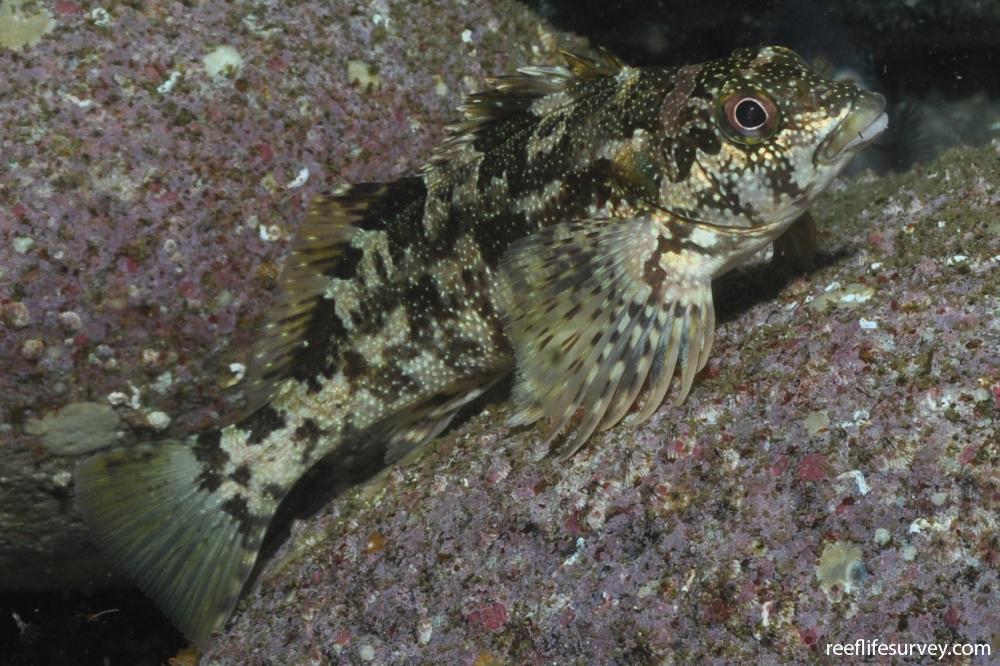Chironemus marmoratus
KelpfishSimilar Species
Same Genus
Distribution
Temperate Australasia
Description
Mottled green, brown and light grey pattern, with small white spots on most of the scales. It occurs commonly in the surge zone of coastal reefs, where it is sometimes confused with the rock cale Aplodactylus lophodon, a species in a related family (described below), with a rounded head but generally similar appearance. A closely related species, the western kelpfish Chironemus georgianus, occurs along the southern coast. The western kelpfish has tufts of filaments on the dorsal spines and lacks white spots on the head and scales. It behaves differently from the eastern kelpfish, as it is a more secretive species that spends much of its time in caves and ledges.
Information
Max Size: 40 cm
Sea Temperature Range: 13.9-24.6°C
Depth: 0-20 m
Habitat Generalization Index: 11.13
Also referred to as the SGI (Species Generalisation Index), this describes the habitat niche breadth of the species. Species with values less than 15 are found in a relatively narrow range of reef habitat types (specialists), while those over 25 may be found on most hard substrates within their range (generalists). Learn more here.
Conservation and Rarity
IUCN Status: Not Evaluated
Occurrence: Common (30.6% of sites)
Occurrence describes how often the species is found on surveys within its distribution. It is calculated as the % of reef sites surveyed by RLS divers across all the ecoregions in which the species has been observed
Abundance: Few (4 per transect)
Abundance is calculated as the average number of individuals recorded per RLS transect, where present.
Edit by: GJ Edgar. 2008. Australian Marine Life. New Holland, Sydney














